Journal of Tourism & Hospitality
Open Access
ISSN: 2167-0269
+44 1300 500008
ISSN: 2167-0269
+44 1300 500008
Research Article - (2019)Volume 8, Issue 2
Today, tourism is vigorously growing global economic sector. The influences of tourism go far beyond economy and touch the socio-political and cultural life of people in the world. Ethiopia is one of the few countries highly endowed with natural and historical tourism resources. However, large parts of Ethiopia’s tourism resources are remained unstudied. Therefore, this research is conducted to assess potential tourist attraction found in Elkere District of Ethiopian Somali Region. To achieve this objective, the researcher used a mixed approach of both quantitative and qualitative techniques. The researcher used purposive sampling to select informants. Self-administered questionnaires of both close ended and open ended, interview and filed observation were used as data gathering instruments. Finally, descriptive statistics and narrative approach are used to analyze data. Accordingly, the research result indicated that Elkere District of Ethiopia has high potential of both nature based and cultural (historical) tourism resources.
Natural tourist attractions; Elkere; Tourism; Historical tourism
Tourism resource is defined as any element in destination that pulls or entices a person to it. Broadly, tourism resources (attractions) are classified into two categories namely, natural and historical tourist attractions. The natural tourism resources include unique landscape, bodies of water and faunal and flora. Historical tourism resources is any man made material and non-material things which can be used as means of attracting tourists [1].
Ethiopia is one of the countries that have enormous and diverse tourist attractions. It has beautiful land features ranging from the highest mountain, Ras Dashen, to Dankal depression1, one of the lowest points in the world, consisting of different attractive rivers having water falls, lakes including the Rift valley lakes, and the various caves like Sofomor (the largest cave in Africa). This wide land features gave birth to the different ecological zones that are a home for the wide variety of wild life of both fauna and flora. Ethiopia is rich enough in wild animals including the seven species of Mammals and twenty five species of birds that are endemic to Ethiopia [2].
Apart from the natural resources, Ethiopia is also endowed with magnificent historical tourist attractions and some of them are registered as World Heritage Sites by UNESCO. The most famous historical tourist sites in Ethiopia designated as “World Heritage Sites” include the walled city of Harar, the Castle of Gonder, the Rock Hewn Church of Lalibela and the 3rd century Obelisk of Aksum. The country was formerly known as Abyssinia and has a history of three thousand years. Many people visited Ethiopia because of the remarkable manner in which the historical traditions has been preserved [3].
Albeit these facts, the sector of tourism industry is still underdeveloped in Ethiopia. Scholars basically mentioned two factors for low development of tourism in Ethiopia [4]. One, the expansion of tourism infrastructure such as hotels and transportation services are not adequate to accommodate international tourists. Second, large parts of potential tourism resources of the country remained unstudied. Hence, tourism in Ethiopia is relied on few internationally known tourist attracting sites. This paper attempts to show potential tourist resources found in Elkere2 district of Ethiopia.
Global trends of tourism
Tourism is defined as the activity of persons traveling to and staying in places outside their usual environment for not more than one consecutive year for leisure, business, or any other purpose. According to WTO and approved by UN in 1993 “tourism is the sum of the phenomena and relationship arising from the interaction of tourists, business suppliers, host governments, and host communities in the process of attracting and hosting these tourists and other visitors”. Tourism is often seen as a global phenomenon with an almost incomprehensibly massive infrastructure. Its importance is evident from the fact that its influence thoroughly penetrates society, politics, culture and, above all, the economy. Indeed, this is the branch of the global economy with the most vigorous growth: the World Tourism Organization [5] estimates that in 2011 it encompassed 980 million tourists who spent 1,030 billion US dollars. They thereby supported a global system with roughly 100 million employees in the modern leisure and experience industry. In 2016, travel & tourism generated US$7.6 trillion (10.2% of global GDP) and 292 million jobs [6].
In fact, tourism sector has both positive and negative impacts. It serves as source of foreign exchange, creates job opportunity and build positive image of countries [7]. In the effort to curb unemployment, the tourism industry has played crucial role in several nations by providing direct and indirect employment. The employment opportunities created by tourism industry ranges from work in formal environments like hotels, tour operators and travel agents informal settings dominated by vending and hawking of various goods and services in tourist hotspots. Apart from these, tourism has also negative socio-cultural and economic impacts. It may lead to deterioration of local culture; disturb the natural and cultural settings of tourist attracting elements [8].
In Ethiopia, considering tourism as one of the economic sector came into being very recently. It was around 1960, that the potential of tourism drew the attention of the imperial government authorities and the first tourism office was established in 1962. In 1966, the first Tourism Development Master Plan was of Ethiopia was created and high attention was given to the tourism sector of the country. In the 1960s, tourist arrivals grew at the rate of 12 per cent a year in Ethiopia and this continued until military government seize power in 1974 [9].
From 1974 for two decades, the industry was suffering from various adverse effects such as prolonged civil war, recurrent drought and restrictions on entry and free movement of tourists from capitalist countries. The year between 1974 and 1991 (the period of military rule in Ethiopia) marked major setback in the development of tourism industry in the country. During this period, apart from periodic upgrades of the infrastructure (such as airports and roads), there has been little investment and successive governments have largely overlooked the sector [10].
Though the sector is still at its infant stage, Ethiopia is raising as the most important tourism destination in the world. This Eastern Africa nation has over the last year taken a deliberate stride aimed at harnessing its tourism products, packaging them properly and displaying them to the local, regional and international markets3. In 2017, tourism contributed about 6.9% of the total employment (1.6 million jobs) in the country and 7.1% of Ethiopia’s GDP (7.384 billon USD) [11].
This research used both primary and secondary sources of data. The data were gathered through interview, questionnaire, focus group discussion and field observation [12]. Purposive sampling technique was used to select 150 respondents on the basis of the assumption that the respondents have both direct and indirect participation in the tourism activities of the area. Self-administered questionnaire, both open ended and closed ended types were distributed to 150 respondents [13]. Three kinds of close ended questions were prepared including ‘yes or no, multiple and five likert scale (1 is strongly agree and 5 is strongly disagree). Finally, 126 properly filled questionnaires were collected and the remaining 24 questionnaire were not collected due to respondents’ related problems [14].
Four focus group discussions were held from different background based on the distribution of tourism resources of the study area. Interviews were also conducted with heads of Culture and Tourism Bureaus of the area, experts of natural resource management and community leaders to get firsthand information tourism potential of the study area. Checklist guided observation was conducted, photographs were taken and hand held GPS was used to record X/Y coordinates of the potential tourism resources [15].
Both qualitative and quantitative methods of data analysis methods were utilized. The qualitative data was described, triangulated and redefined different views based on systematic grouping of variables and content analysis. The quantitative data was analyzed using descriptive statistics like mean, frequency and percentage and SPSS Version 16.0 was used.
The study result shows that Elkere District has plentiful and unutilized potential tourism resources. These potential resources can be generally classified into natural and historical tourism resources (M 1.167 & SD .376). As shown in Table 1, the study area has various kinds of biodiversity, wild animals and forests (M, 1.364 & SD .572). Moreover, the cultural and historical sites and values of the district can also be used as tourist resources (M 1.424 & SD .609).
Table 1: Tourism Potentials of Elkere District.
| No | Statements | N | M | SD | Min | Max |
|---|---|---|---|---|---|---|
| 1 | Elkere District has tourism potential | 66 | 1.167 | .376 | 1.00 | 2.00 |
| 2 | There are abundant biodiversity resources in the district | 66 | 1.364 | .572 | 1.00 | 3.00 |
| 3 | Historical and cultural values of the area can be tourist resources | 66 | 1.424 | .609 | 1.00 | 4.00 |
| 4 | Agro-pastoral activities of the district can be tourist resources | 66 | 3.182 | .875 | 2.00 | 5.00 |
Note: M=Mean, SD= Standard Deviation, Min=Minimum & Max= Maximum of1 is very high and 5 is very low
According to the responses of informants and field observations, the rural community of the district has colorful cultural values. The other less tourism potential of the district is the agro-pastoral activities carried out by the local community of the study area (M 3.182 & SD .875). Generally, the district has high potential natural tourism resources, limited in historical and cultural potential tourism resources (Figure 1).
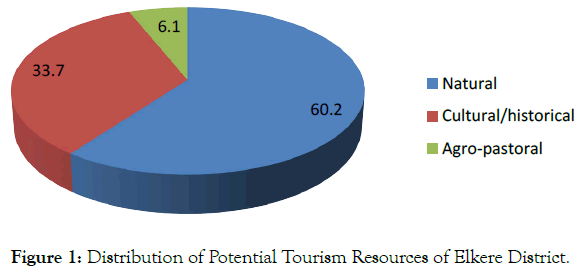
Figure 1: Distribution of Potential Tourism Resources of Elkere District.
The study result shows that Elkere District has high potential in nature based tourism resources such as fascinating landscape waterfall and animals.
The unique land scape of El-kere
The very fascinating and unique land scape which consists of mountains encircled the town is one of the most important potential tourism resources of Elkere Woreda. This area is considered as tourism resource of the Woreda not only because of its unique land feature, but also due to the attractive natural environment in its surrounding such as natural dense forest, the presence of several wild animals and several small river streams and waterfall originated from the mountain itself. The high points in this mountainous landscape include the peaks of the Audo Range, which runs from the northwest to the southeast parallel to the Shebelle River. Geomorphologic- ally, mountain is rarely available in Ethiopian Somali Region which is almost plain land.
The mountain terrain at Elkere is really very attractive and has untouched potential value for tourism. Firstly, potential tourism value of this landscape is emanated from accessibility of the mountain as it can be observed from the town of Elkere itself. Secondly, the potential tourism value of the place is originated from the fact that the mountainous landscape of Elkere is part of the terrain mountain which extended almost 160 Miles north to south parallel to the Shabele River. Here, it should be noted that Elkere is the only town through which this long chained mountain passed. Finally, the beauty of structure of the land which existed like natural defensive wall by encircling the town of Elkere is another feature from which potential tourism value of the place aroused. The mountain at Elkere Woreda has three features. One part of the mountain is covered with natural forest. The other part of Elkere Mountain is rocky mountain which is not covered by forest and the third is the forested mountain which is always covered by mist. This is a wonderful natural place where a single mountain consists of three different features (Figure 2).
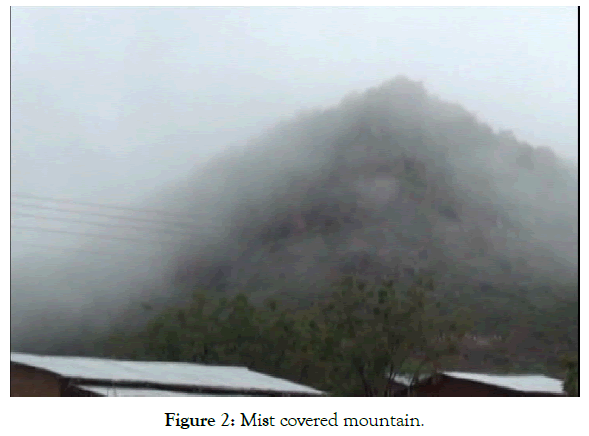
Figure 2: Mist covered mountain.
Today, attractive landscapes are common tourist destination in several countries. For instance, the mountainous landscape known as Kundi in Illubabor is one of the frequently visited tourist site in Western part of Oromia. Therefore, if promoted through different media, there is no reason that El Kere Mountain would not be attractive tourist destination like Kundi Mountain of Illubabor (Figures 3 and 4).
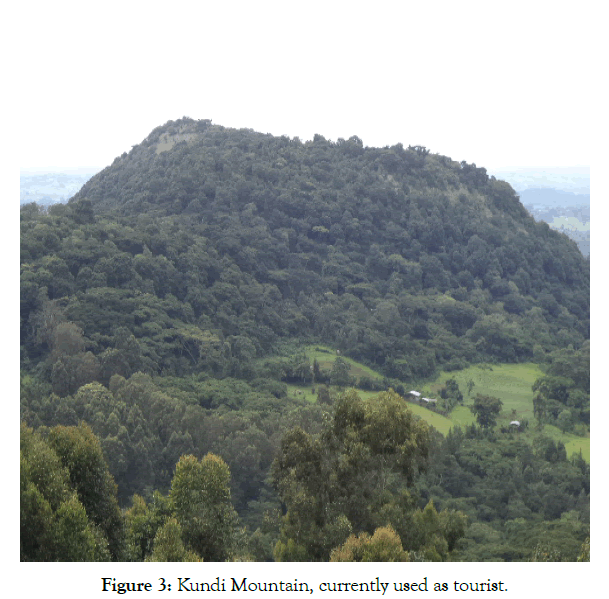
Figure 3: Kundi Mountain, currently used as tourist.
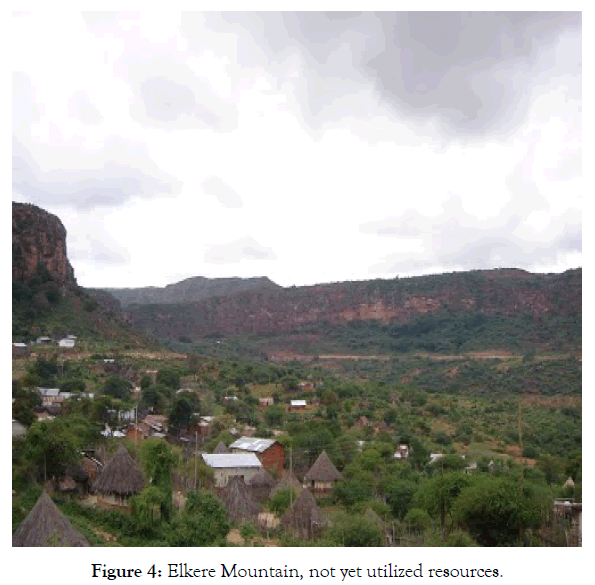
Figure 4: Elkere Mountain, not yet utilized resources.
Above all, the scenic beauty of the foot of the mountain at the place called Ella is really amazing. Except the absence of cave, most feature of the site is similar with Sof Omar4 natural cave of Bale. Just like the Sof Omar natural tourist site, the magnificent place at Elkere Mountain has a natural river. At both sites, the volcanic rock which existed like a wall has similar morphological shape with the exception of color difference. The rocky mountain wall at Elkere is red while that of Sof Omar’s cave wall is white. This intriguing place which shows the beauty of nature has great aesthetic value and has boundless potential to attract every tourist (Figures 5 and 6).
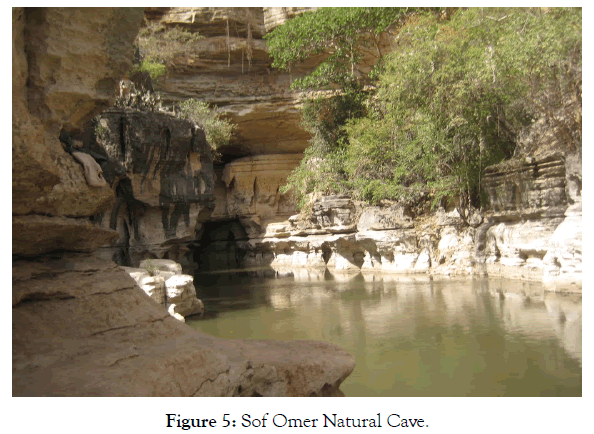
Figure 5: Sof Omer Natural Cave.
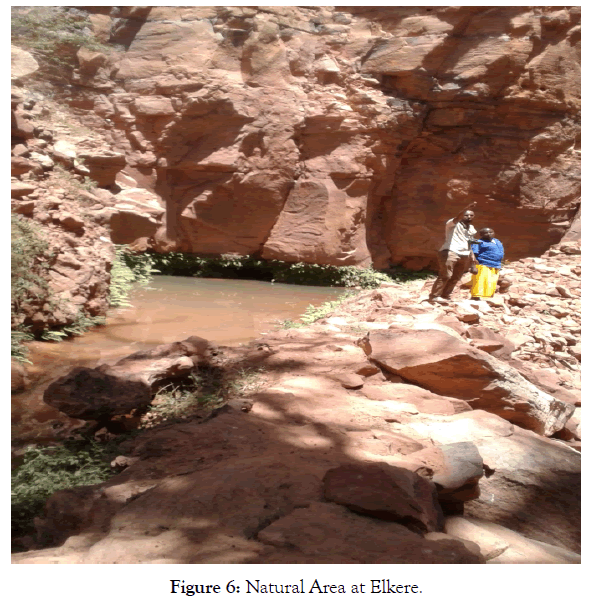
Figure 6: Natural Area at Elkere.
The natural forest as potential tourism resources
The dense natural forest found in El kere Woreda is another important potential tourism resource of the area. Particularly, the forest on the foot of the mountain consists of old and big natural trees. Unlike other parts of Ethiopian Somali Region, a large area of Elkere Woreda is covered by tropical rain forest. The forest has a closed canopy, in which the treetops, or crowns, touch each other, creating a shaded forest interior.
According to the local informants, this natural forest is preserved from anthropogenic destruction due to the fact that the Woreda’s people livelihood is mainly trade and pastoralism. Consequently, the absence of expansion of agricultural land which is the main factor of deforestation elsewhere in Ethiopia is the reason behind the conservation of this natural forest. Nevertheless, the unpolluted environment of the natural forest area in combination with its wild inhabitants is significant potential resource of tourism development in the study area.
Today, the protected natural forest in southwest Shewa (25 KM away from Walliso) is attracting tourists to the area. Similarly, if the natural forest found in the El Kere woreda is protected and promoted, undoubtedly it would be important natural resource for tourism development of the woreda (Figure 7).
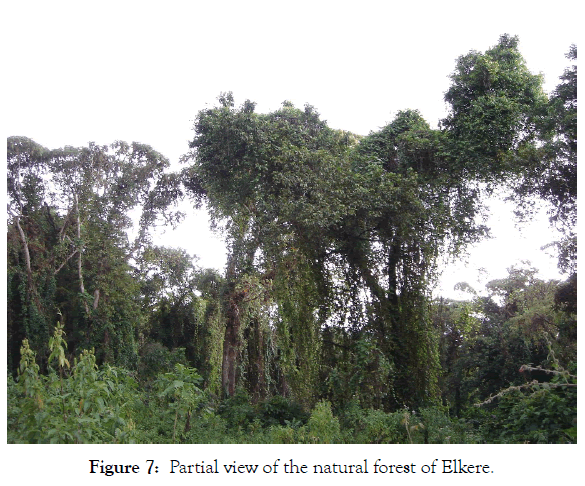
Figure 7: Partial view of the natural forest of Elkere.
The waterfall
Furthermore, the attractive waterfall found in El Kere Woreda can be termed as the precious gift of nature to the area. The waterfall is located in the southeast of the town approximately at about 7 KM. It is originated from the top of the mountain.
This waterfall is locally called as Ella Bari. The length of Ella Bari waterfall from its source to the surface of the earth is estimated about 50 meters. What is more interesting is the natural environment accompanied the surrounding areas of the waterfall. It consists of dense forest, wild animals and small natural water reservoirs. The size of Ella Bari waterfall is varying among different seasons. During the rainy season, the size of the waterfall increased to its maximum level. It is during this time that the sound created by the fall of the water heard from distant place. The Ella Bari waterfall flows to the southern direction and divided the town into two by crossing through its southern edge. The gorge created by the flow of Ella Bari is decorated by shrubs in both right and left sides (Figures 8 and 9).
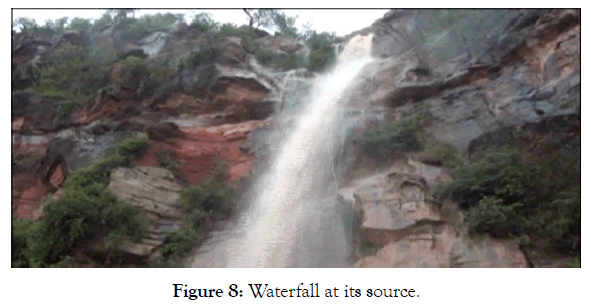
Figure 8: Waterfall at its source.
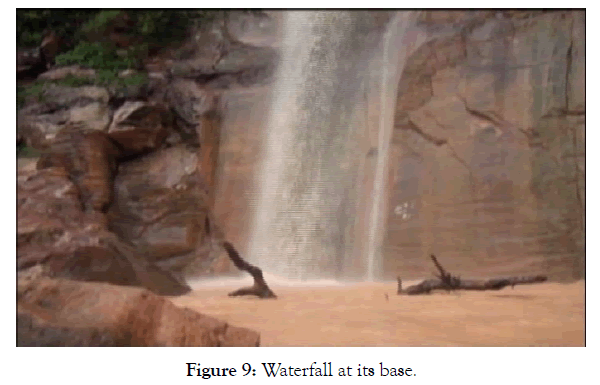
Figure 9: Waterfall at its base.
For about 5 KM, Ella Bari flows in a narrow gorge and then flows 18 Miles in plain field until it reaches the place called Shaki, where it joins the River called Dol. From Shaki, both Ell Bari and Dol River jointly flows for 10 Miles and joined Wabi Gestro River which originated from Bale Mountain National Park. Therefore, Ell Bari is the tributary of Dol River and sub-tributary of Wabi Gestro River which flows southward into Somalia and finally enters into Indian Ocean as part of the Juba River.
Nevertheless, the view of Ell Bari waterfall particularly at its origin from the mountain is impressively beautiful. The fabulous scenery which the fall forms is essentially additional element of the site as potential tourism destination. The Ell Bari waterfall can be used for recreational tourism by those groups of tourist usually called "waterfall lovers", "waterfall buffs" or "waterfall fans".
Now a day, waterfall is the most interesting natural tourism destination elsewhere in the world. In the context of our country, using waterfall as a tourism resource is not well done. However, in SNNPR, Gamo Gofa Zone around Arba Minch, waterfalls are becoming important tourist destinations and attracting tourists. In the same way, the warefall found in El Kere Woreda has great potential to become tourist destination if promoted and tourist facilities are fulfilled.
Wild animals
El Kere Woreda is endowed with several species of Wild animals. The natural dense forest found in the woreda is very important habitat for the wild animals. According to the informants, leopard, giraffes, Gerenuk, Dik dik and lion are widely available in the dense forest of El Kere. Particularly, the study area is a home to the reticulated giraffe which is also known as the Somali Giraffe. This specie of Giraffe is endemic to the Horn of Africa and registered by the International Union for Conservation of Nature (IUCN) as endangered animal5. Luckily, the researcher encountered with Giraffes and able to capture its picture (Figure 10).
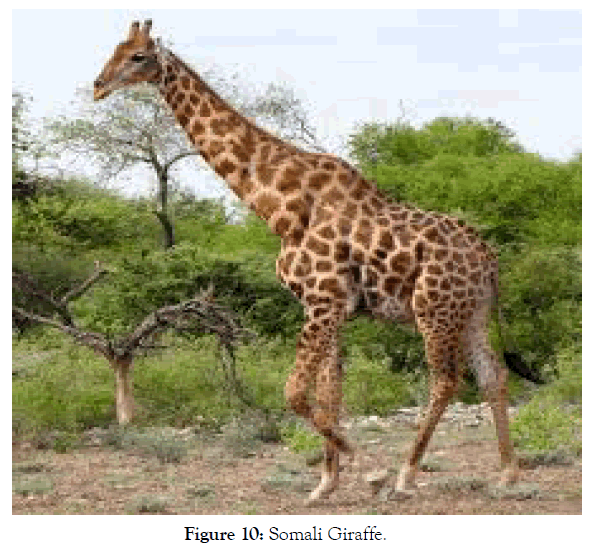
Figure 10: Somali Giraffe.
The other wild animal observed during our filed work is the Gerenuk, also known as the Giraffe Gazelle (Garanuug in Somali language). This species of wild animal is endemic to the drier parts of East Africa. The interviewed informants states that before a decade Garanuug was widely found in the woreda and even appeared with goats in a pasture where the pastoralists feed their cattle. However, recently, the number of Garanuug is decreased due to the recurrent drought which affected the area. Similarly, International Union for Conservation of Nature (IUCN) has also registered Garanuug as Nearly Threatened wild animal6. Moreover, Salt’s Dikdik (Madoqua saltiana) are quite frequent in the study area and footprints can be found almost everywhere in the bush. It is a small antelope native to the semi-desert and bush land parts of the Horn of Africa. These animals can be seen during the whole day while crossing the road in some distance to the car or resting in the shade close to the road (Figures 11 and 12).
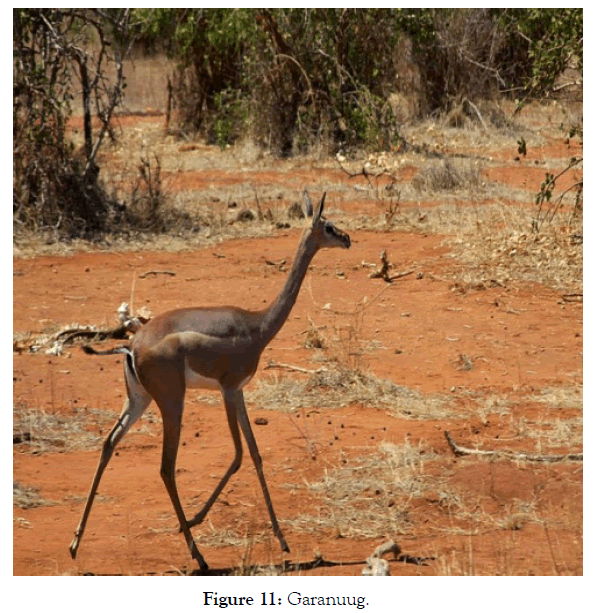
Figure 11: Garanuug.
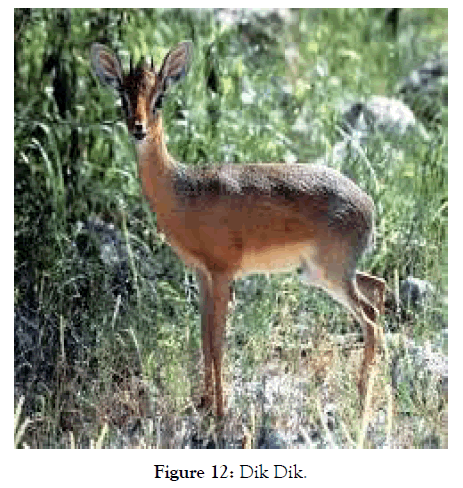
Figure 12: Dik Dik.
What is more important here is that hunting is not practiced in the woreda and this created favorable condition for the presence of wild animals. Particularly, the Eastern part of the Woreda, the land between El kere and Chariti Woreda is covered by untouched natural forest (very little human settlement) which consists of several wild animals. Currently, Ethiopia’s natural tourism destinations mostly consist of Wild animals like in parks, sanctuaries and other protected lands. Therefore, the researcher believed that this part of the Woreda could be a park and with fulfillment of certain tourist facilities and promotion it would be one of the most important tourist destinations in the country.
In addition to the above mentioned potential natural tourism resources, El kere woreda is also endowed with historical resources of tourism such as ruins of historical buildings and remains of ancient settlements. The followings are identified as Historical tourism resources of El-Kere Woreda.
British residence
The British Colonial residence is located at about 5 KM north east of Elkere Town. According to the data acquired form the local elders, this historical house is built by Emperor Haile Silassie I in the pre- Italian period to serve as Guest house for the Emperor (during which the town was center of Elkere awraja administration). In the post-Independence period, when the area formerly called Ogaden set under British Military Administration the house became residence of one British Military Colonel whose name is Col. Durham. As obviously known, historical houses are visited by tourists because of different reasons. These include unique architectural style of the house, there age and most importantly there association with the known historical period of the country. Accordingly, this building can be seen as potential tourism resource of the Woreda due to its association with notable historical figure in Ethiopia (Emperor Hailesilassie) and its link with the historical period of British Military Administration in the Country (Figure 13).
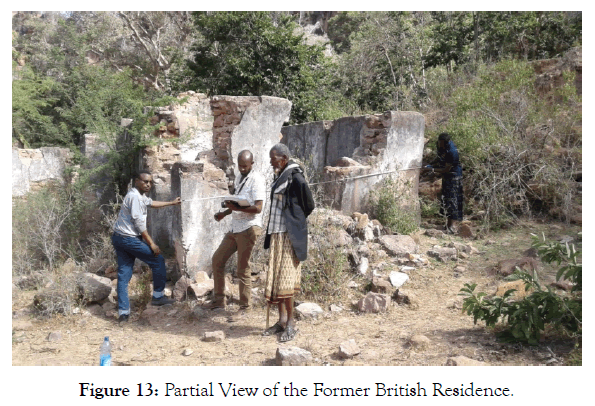
Figure 13: Partial View of the Former British Residence.
The historical house has four rooms with heater. The length of the wall is (from the top to the surface is 2.5 Meter.) and the width is 20 x 4.5 Meter. This historical house has rectangular shape. The house has combinations of both European and local features. The wooden stove found in one room of the house (probably the salon) is European feature. While the internal window of the building is in fact followed the feature of local style. Particularly, in the old buildings found in the eastern part of Ethiopia, internal window was used as shelves to put household material.
Today, two historical buildings which were formerly belongs to Italian colonial administrators are being utilized as tourism resources in Jimma Zone. Similarly, if restoration of the building is done and promoted to the public, this historical house of Elkere could attract tourists in the same way historical houses in other parts of the country are attracting tourists (Figures 14 and 15).
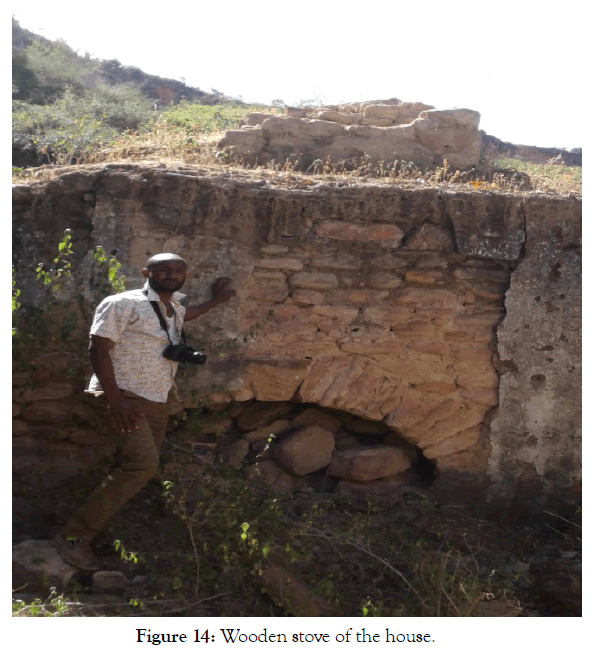
Figure 14: Wooden stove of the house.
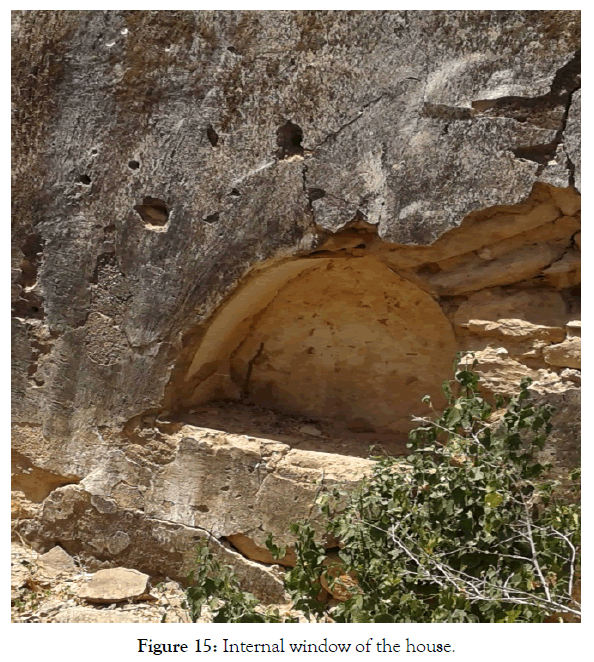
Figure 15: Internal window of the house.
Owing to its association with prominent historical figure, Emperor Haile silassie I and its consecutive historical functions, the place has great potential to attract tourists.
The ruins of genale prison
At about 2 KM from the historic residence of British army Colonel in the northern direction, there is another remnant of historical building. This was formerly used by the British Military Administration of the area as a prison. According to local elders, the British called the prison Genale which is perhaps derived from the River Genale in Southeastern Ethiopia. Although there is only small remnant of the wall of the prison, the site has great potential to attract tourists since it is associated with crucial historical period of the country.
Apart from its potential value as a tourism resource, this place has great historical values. It is a place where Ethiopian martyrs who fiercely resisted British domination over Ethiopia during the period known as “British Era” were detained, tortured and sacrificed their life. One of the informants described the prison place as follows:
“This place should not only visit as a tourist site, but it should be venerated as a holly place. During my childhood, I remember when the British authorities brought Ethiopian patriots all over the country and put them in this prison secretly” (Figure 16).
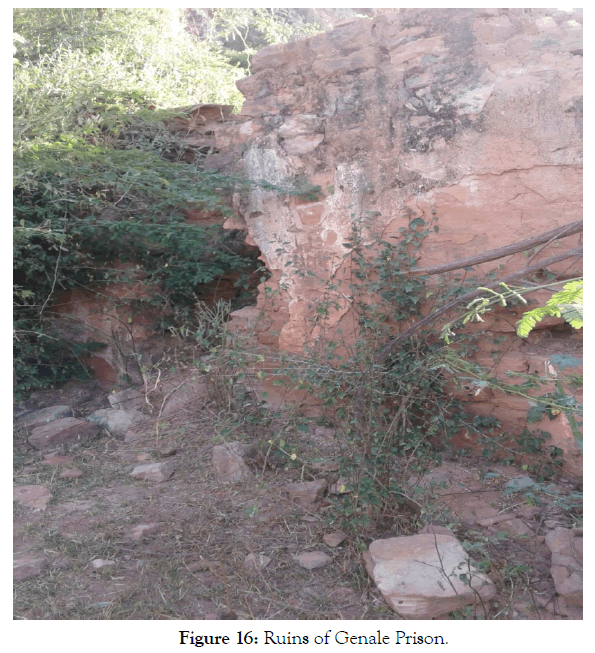
Figure 16: Ruins of Genale Prison.
The bar of Norwegians
The other important historical site which can be used as a tourist resource in the El Kere Woreda is the Grocery (Bar) used by Norwegians. The wall and the roof of the bar are totally lost but the other part of the Bar still exists. The shape of the building is circular with heater. It was built during the Ethio- Italian war by the Norwegians who were providing humanitarian aid during the war7.
As one historical building which is particularly associated with the history of Ethio-Italian war, the site can be used as important tourist site in the woreda.
In the context of our country, several historical buildings are being used as tourist destinations. In relation with this, the house built by the Russian members of International Red Cross Society found in Dessie town is visited by many tourists. Therefore, it is possible to conclude that this historical house has great potential to become tourist destination of El Kere Woreda (Figure 17).
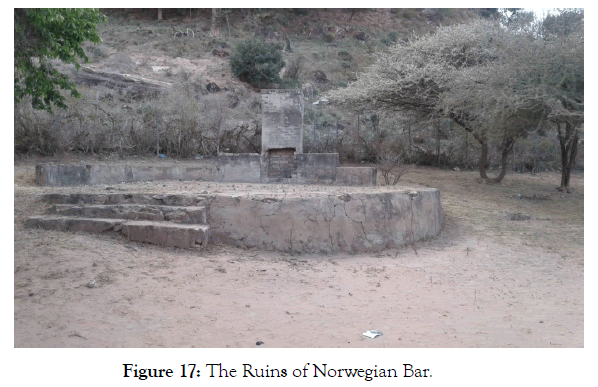
Figure 17: The Ruins of Norwegian Bar.
The early settlements (ruins)
The ancient settlements are located at about 15 KM from the town of El Kere in the southeastern direction. This is the remnants of ancient buildings and the exact period when the building constructed is unknown. However, the local elders claimed that its period of construction is perhaps before 300 years. The origin of this ancient settlement is probably traced back to 17th century. Such building remnants of the Middle Age period are rarely available in Ethiopian Somali Region in particular and in Ethiopia in general. British explorer, John Mockler who crossed the area formerly known as Ogaden in 1879 mentioned the existence of huge buildings and mosques in the area today called El Kere (formerly known as Serer)8.
The building has potential to become tourist resource as consists of the settlement history of the area and indicates the history as well as civilization of the medieval period (Figure 18).
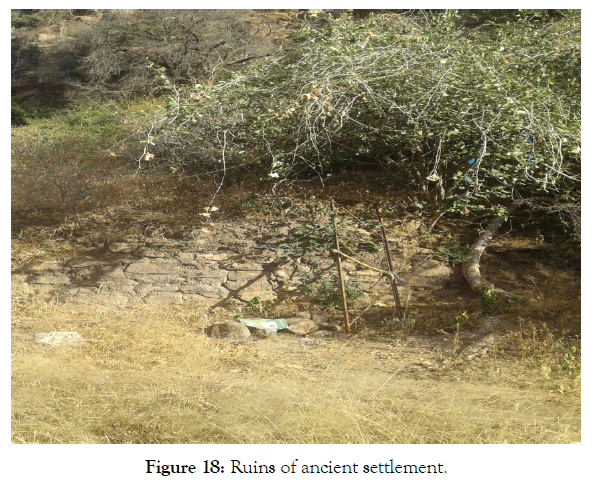
Figure 18: Ruins of ancient settlement.
Tourism sector has been emerged as part of the new development strategies for developing countries. It is primarily focused on participation of marginalized communities and local development. Within this scheme tourism development in Elkere Woreda is indubitably essential. This study ascertained that Elkere Woreda has huge tourism potentials and it is one of the potential sites to develop tourism projects successfully. As relatively compared with others like cultural (historical) tourism resources, Elkere District has high potential nature based tourism resources. Several natural and historical potential tourism resources have been identified in this research. The nature based potential tourism resources of the district include, waterfalls, mountainous landscape, dense natural forest and biodiversity of the area. Moreover, Elkere District has also different potentially historical tourist attraction sites such as the ruins of various historical houses and ancient settlement. The natural potential tourism resources of Elkere Woreda has unlimited values for tourism development and also for the protection of the natural environment of the area. The historical tourism resource of the woreda such as British colonial residence is also important not only for tourism but it can be used as a living testimony to reconstruct the past history of the area. However, the potential tourism resources of the district are not conserved, promoted and utilized.
1Ras Dashen and Danakil Depression are the two extremes of Ethiopian land. Ras Dashen is the highest mountain in Ethiopia and 4th in Africa with height of 4,620 m above sea level while Danakil Depression is the lowest point in Ethiopia (in fact in the world too) 120 m below sea level.
2El kere is found in Ethiopian Somali Region & located on the latitude of 5051’ North and longitude of 42003’ East. The study area can be classified within altitude- thermal (agro-climatic) zone of ‘Bereha’. The altitude of Elkere Woreda ranges from 700 to 900 meter above sea level.
3In 2015, Ethiopia designated “Best Tourism Destination of the Year” by World Travel and Tourism Council (WTTC, 2015).
4Sof Omar is the natural cave found in south eastern part of Ethiopia is the largest/longest natural cave in Africa.
5International Union of Conservation of Nature (2007), Report on the Status of very endangered Wild animals in the Horn of Africa.
6International Union of Conservation of Nature (2007), Report on the Status of threatened Wild animals in the Horn of Africa.
7The Norwegians and the Swedish members of International Red Cross Society were serving in the South and South eastern parts of Ethiopia (biography of Dej. Nasibu Emmanuel, 1976)
8Pnkhrust & Ingrams, Leila (1988), Ethiopia Engraved: An illustrated catalogue of Engravings by foreign travellers from 1861 to 1900.
Citation: Merga S (2019) Assessment of Potential Tourism Resources in Elkere District of the Ethiopian Somali Region. J Tourism Hospit 8: 403.
Received: 04-Mar-2019 Accepted: 17-Apr-2019 Published: 26-Apr-2019 , DOI: 10.35248/2167-0269.19.8.403
Copyright: © 2019 Merga S. This is an open-access article distributed under the terms of the Creative Commons Attribution License, which permits unrestricted use, distribution, and reproduction in any medium, provided the original author and source are credited.